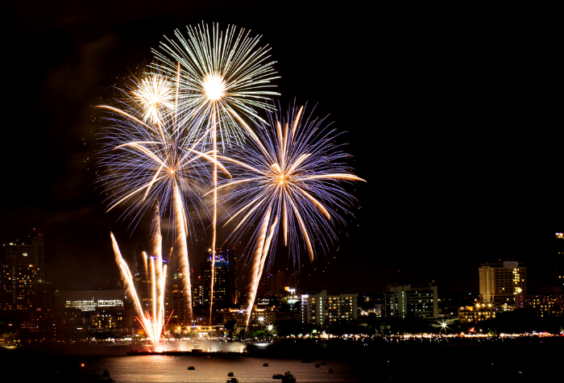 In T.H.E. Insurance Company v. Trey D. Olson, et. al., the Seventh Circuit Court of Appeals agreed with the U. S. District Court for the Eastern District of Wisconsin, holding that the insurer had no duty to defend or indemnify its insured based on a policy exclusion for injuries to any persons assisting or aiding in the display of fireworks.
In T.H.E. Insurance Company v. Trey D. Olson, et. al., the Seventh Circuit Court of Appeals agreed with the U. S. District Court for the Eastern District of Wisconsin, holding that the insurer had no duty to defend or indemnify its insured based on a policy exclusion for injuries to any persons assisting or aiding in the display of fireworks.
This case arose out of fireworks explosions at separate fireworks displays that injured Timothy Olson and Todd Zdroik, two volunteers of T.H.E. Insurance Company’s insured, Spielbauer Fireworks Company. The fireworks distributed by Spielbauer exploded prematurely at both events and severely burned Olson and Zdroik, who were working as volunteers for their respective town’s fireworks displays. Olson opened and closed a bin from which the other volunteers obtained fireworks, and Zdroik worked as a “shooter,” manually lighting the fuses on mortar shells. Olson later passed away from unrelated causes.
Olson’s estate and Zdroik sued Spielbauer in Wisconsin state court. T.H.E. denied coverage to Spielbauer under its general and excess liability policies. T.H.E. then sought to resolve the coverage issue by seeking a declaratory judgment in federal court. All of the policies contained a “shooters endorsement,” which precluded coverage as follows:
This policy shall NOT provide coverage of any kind (including but not limited to judgment costs, defense, costs of defense, etc.) for any claims arising out of injuries or death to shooters or their assistants hired to perform fireworks displays or any other persons assisting or aiding in the display of fireworks whether or not any of the foregoing are employed by the Named Insured, any shooter or any assistant.
The district court granted T.H.E.’s motion for judgment on the pleadings, determining T.H.E. had no duty to defend or indemnify Spielbauer based on this exclusion. The district court noted that, in their respective state court complaints, Zdroik and Olson admitted to volunteering at the displays and, although Olson’s role as a container operator was minimal, concluded that the exclusion applied to any kind of volunteer work at a fireworks display. Zdroik, Olson’s estate, and Spielbauer all appealed.
The primary issue on appeal was whether the exclusion extended to volunteers of Spielbauer or whether it was limited to only those assisting hired shooters or assistants. The parties focused on the portion of the exclusion that references “any other persons assisting or aiding in the display of fireworks”. Zdroik, Olson’s estate, and Spielbauer argued that while “any other persons” may include volunteers, the exclusion applied to volunteers only if they were assisting hired shooters or hired assistants at the time they sustained their alleged injuries. T.H.E. argued that the “other persons” category was broader and included any volunteer assistant, regardless of whether anyone else at the display worked as a hired employee.
Like the District Court, the Seventh Circuit sided with T.H.E.’s interpretation, reasoning “[t]he expansive wording in and around the final category (‘any other persons,’ ‘assisting or aiding,’ ‘whether or not any of the foregoing are employed by the Named Insured, any shooter, or any assistant’) puts a reasonable insured on notice that all volunteers are excluded from coverage.” The court noted that the provision included additional language that was unnecessary, and that T.H.E. could have achieved its goal by removing “shooters or their assistants hired to perform” because these individuals are already captured by the “other persons” category in the endorsement. Nevertheless, the court reiterated that the plain meaning of the endorsement was to exclude coverage for injuries to anyone who assisted in a fireworks display. Under this plain reading of the endorsement, the court concluded that T.H.E. had no obligation to defend of indemnify Spielbauer for Zdroik’s or Olson’s estate’s claims.
